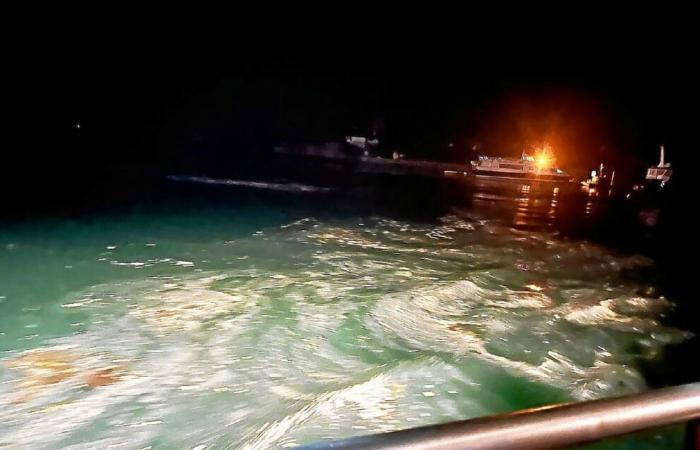Sylvain Darchy, vice-prosecutor of Vannes, and the maritime gendarmerie in charge of the investigation, will very soon launch a call for witnesses concerning the pollution observed in the Gulf of Morbihan on the night of February 1 to 2, 2024. Pollution revealed and filmed, in the middle of the night, at the time, by a fisherman from Île aux Moines. His images showed a greasy, foamy slick stretching over nearly 6 km.
The investigation, under the direction of deputy prosecutor Sylvain Darchy, cast nets in multiple directions in order to determine the origin of this pollution and establish responsibilities. Nine months later, many doors have been closed, but the origin of the damage to the environment remains mysterious. “We called on a laboratory in Brest to model the trajectory of the water table in order to find the starting point. This is what is done, for example, when bundles of drugs are found on beaches. But the current is too strong in the Gulf of Morbihan, and the number of islands too large to achieve a convincing result,” explains Sylvain Darchy.
A sewage treatment plant raided
Second avenue considered: the use of satellite images. But, here too, the attempt failed. On the evening of the incident, the cloud cover was too heavy to obtain meaningful images.
The analysis of the polluted water concluded with the presence of fecal matter, with the famous bacteria Escherichia coli. But the laboratory was unable to determine whether they were human or animal in nature, which would have made it possible to tighten the noose.
The Vannes public prosecutor's office then ordered the search, on February 9, 2024, of the Bourgerel wastewater treatment plant, in Baden. It is the closest wastewater treatment facility to Île aux Moines. It is highly automated, but nevertheless has a valve that can be activated manually. But, again, the investigators left without any conclusive information.
No new pollution since
It was then necessary to consider the hypothesis of uncontrolled emptying of the contents of septic tanks. A professional from Île aux Moines was heard as a witness by investigators and it turned out that he would have had no financial interest in practicing in this way. The case of ephemeral companies having been able to resort to this practice was also mentioned – there would have been precedents in the north of Brittany – but there was no follow-up.
The Vannes public prosecutor's office therefore resolves to call for witnesses “because all possible investigations have been carried out”. The magistrate who is following this case nevertheless notes that no new pollution has been observed since February 2024 in the gulf, while the fisherman from Île-aux-Moines would have seen around ten, with supporting images for some of them, in the previous year. “The media coverage of this affair may have served that purpose. What is certain is that never before has a procedure, to this extent, been brought to justice for this type of event,” notes Sylvain Darchy.






